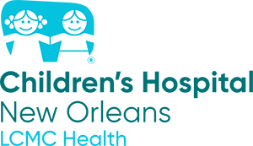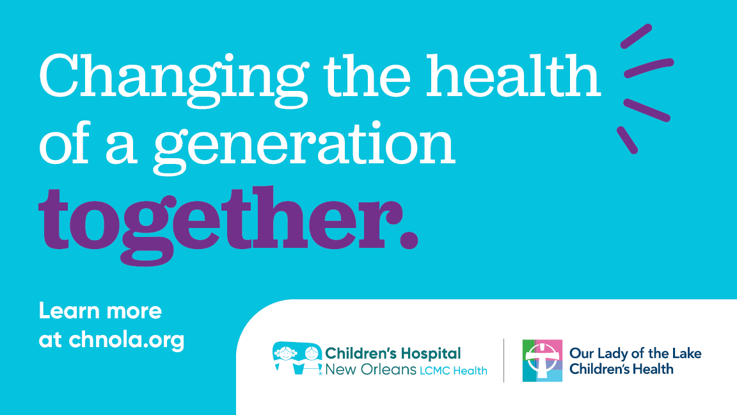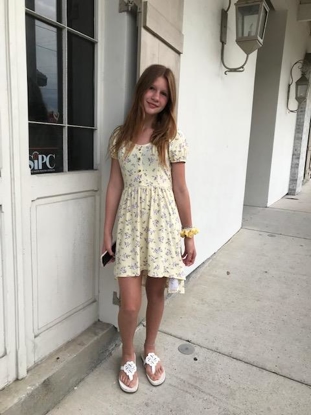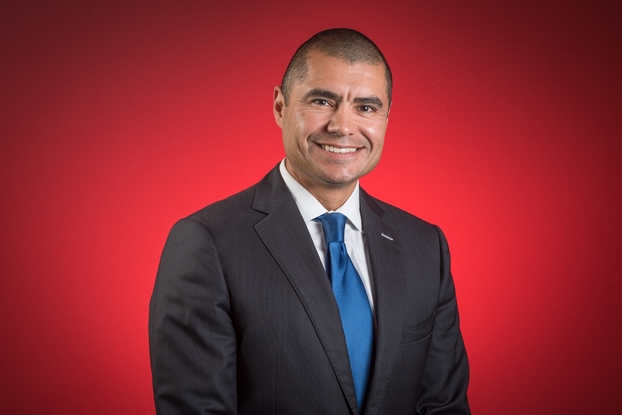Brady’s Story: Resilience in the face of an unexpected brain tumor diagnosis and surgery
- Category: Patient Stories
- Posted on:

Meet 18-year-old Brady Cure from River Ridge, Louisiana. Recently, he graduated from Archbishop Rummel High School in Metairie, and is currently enrolled in the St. Bernard Fire Academy, where he is on track to graduate in March, pursuing his dream of becoming a firefighter. Aside from his professional aspirations, Brady cherishes life’s simple pleasures —hunting, fishing, and enjoying the beauty of the great outdoors. Being out in the elements is where he truly feels at home.
However, two years ago, life threw him a curveball he wasn't prepared for.
According to his parents, Rob and Stephany Cure, their son Brady had always been the picture of good health until migraines unexpectedly began to take center stage. Initially sporadic, these headaches intensified over time, occurring more frequently and closer together.
“At first, we attributed his migraines to his ADHD medication,” said Stephany. “We thought he might be taking his meds on an empty stomach when it should be taken with food. His morning routine often involved complaining of a headache followed by vomiting. We figured that not following instructions about taking his medication with food might be causing his symptoms.”
As time passed, Brady’s migraines increased in frequency, negatively impacting both his sleep and school performance. Stephany and her husband grew increasingly worried. Brady went from having migraines once every few weeks to once a week, and eventually, to multiple times a week.
Stephany took her son to his pediatrician, Dr. Heather Porche, for an assessment. Brady passed his standard neurology tests such as walking in a straight line and performing tasks like holding his arms out while tapping his nose — all the results were normal. Dr. Porche considered the possibility of migraines given that Brady’s symptoms aligned with typical migraine indicators. To err on the side of caution, especially considering the nature of the symptoms involving his head, Dr. Porche recommended a CT scan. Brady had a CT scan at Children’s Hospital New Orleans. 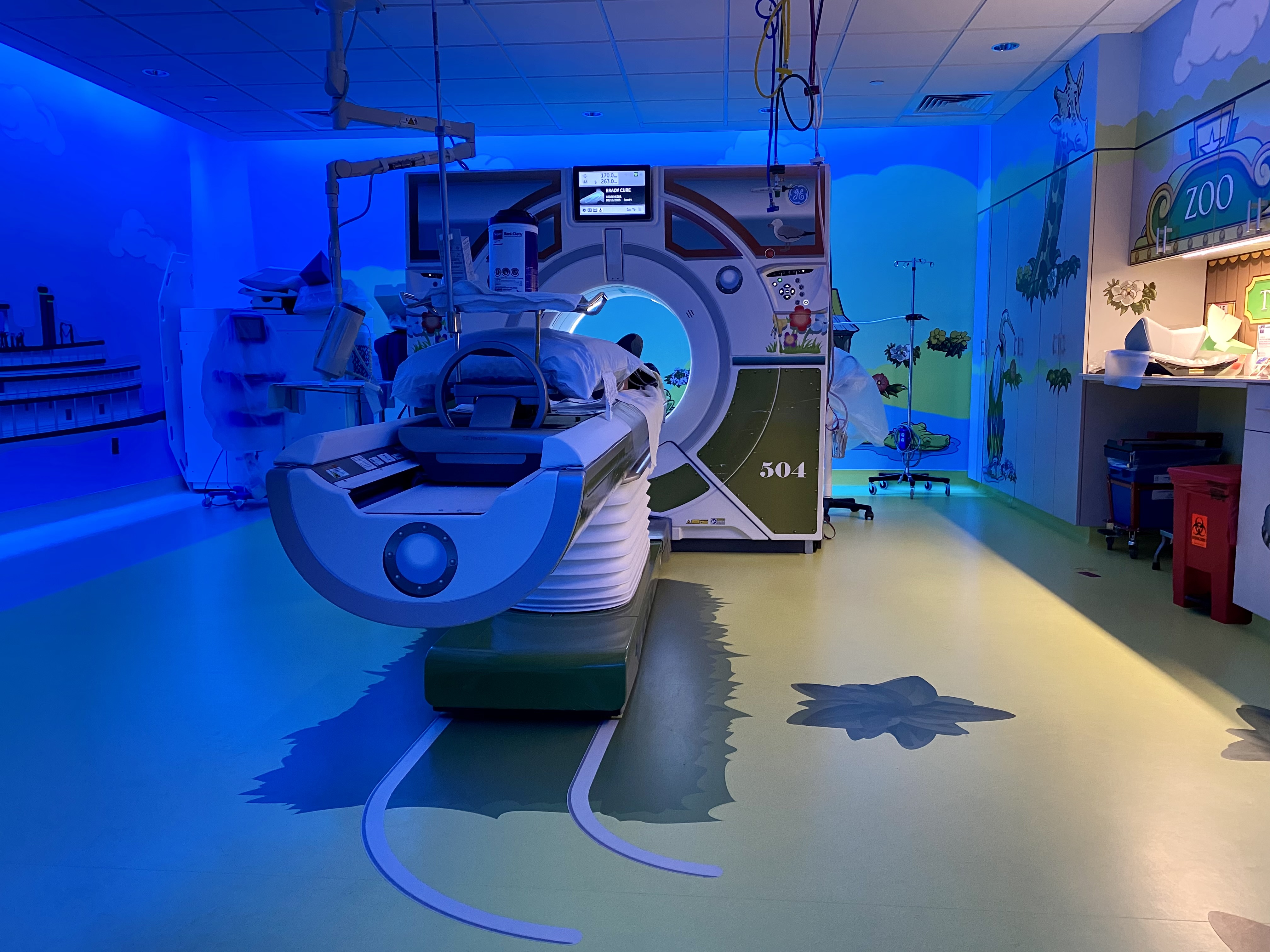
“When we arrived, we had a friendly conversation with the technician,” Stephany recalled. “She assured us the exam would only take a few minutes as she headed to the other side of the glass to perform the exam. However, when she returned to the room, the entire atmosphere shifted. The expression on her face was different. She told us that somebody would come in to talk to us.”
Shortly after, the radiologist entered the room and told Stephany that they had discovered a large tumor in Brady's cerebellum, the part of the brain located at the back of the skull responsible for coordinating voluntary movements and maintaining balance. The radiologist told them that Dr. Jerome Volk, a pediatric neurosurgeon, would be there to discuss the results and determine the next steps.
"While we waited in the exam room, I called my husband and urged him to get here quickly," said Stephany. "I was in panic mode. I motioned for Brady to sit next to me, and he just fell into a puddle of tears, melting into my lap. He asked me, 'What does this mean?' I told him honestly, 'I don’t know, buddy. We’ll figure out exactly what this means, but it sounds serious.’ I've always been a big proponent of telling the truth. I could see from his face that he knew this wasn’t going to be a good scenario. So, we just held each other, trying to stay as positive as possible about it."
During the candid discussion with Brady and his parents, Dr. Volk displayed all the CT scan images, identifying the tumor’s precise location and offering his initial evaluation. Recognizing the need for more comprehensive imaging of the brain tumor, Dr. Volk immediately ordered an MRI for Brady.
“An MRI provides us with a more detailed and precise view of soft tissues, including the brain's structures, and plays a crucial role in accurately characterizing tumors,” said Dr. Volk. “This imaging method helps us identify the tumor's size, shape, and location, and its relationship to surrounding structures, which is important for determining the best treatment approach for Brady. Moreover, for cases where surgery is necessary, an MRI can aid in pre-surgical planning. The information that we gather from an MRI helps our neurosurgery team create a precise and effective surgical approach.”
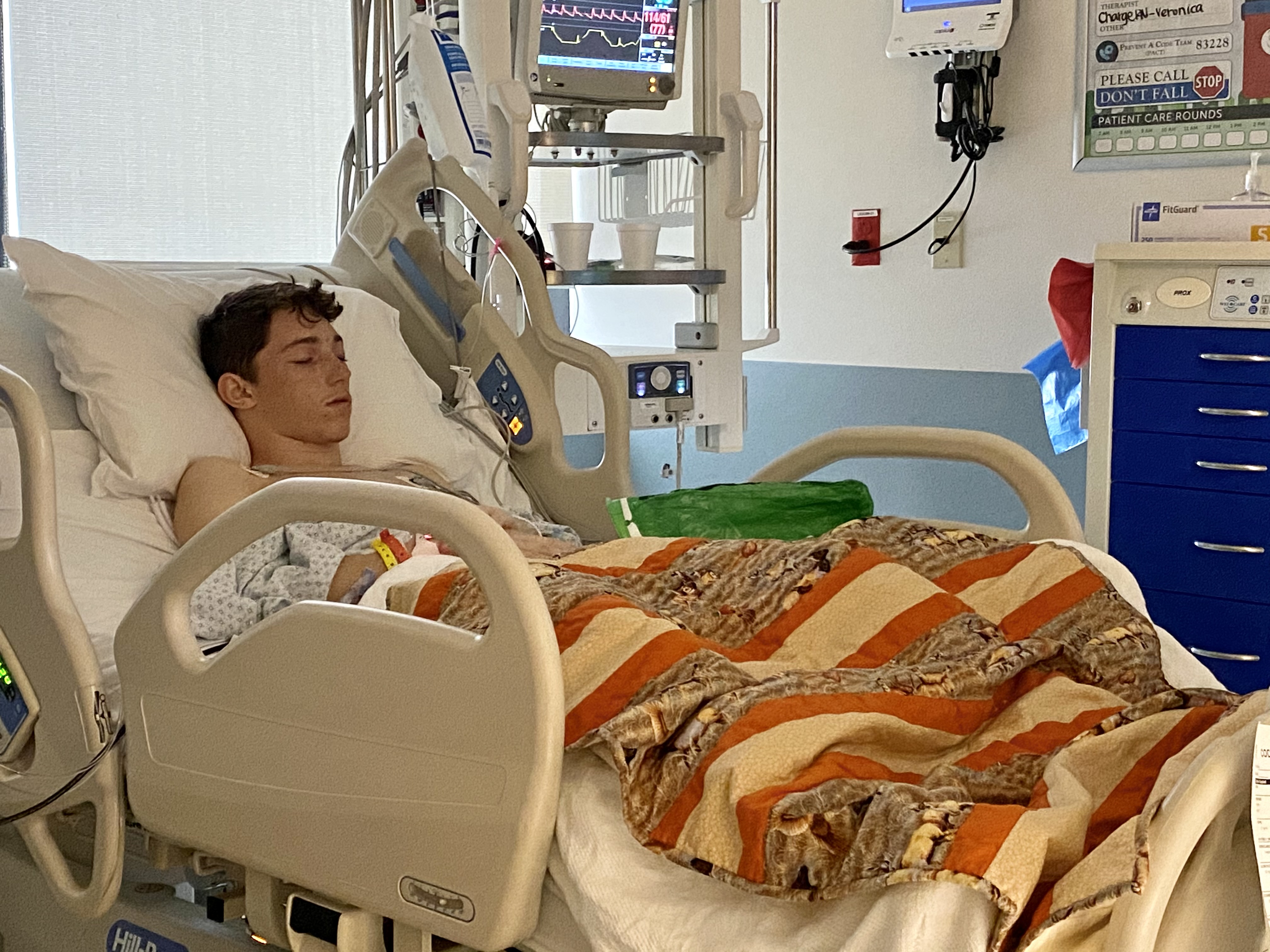 On May 21, 2021, Dr. Volk reviewed the results of Brady’s MRI with the Cure family. The findings revealed Brady had a grade one pilocytic astrocytoma, a type of brain tumor typically located in the cerebellum. Fortunately, this was a low-grade or grade one tumor. These tumor types are generally slow growing and less aggressive compared to higher grade tumors. At the time of diagnosis, Brady’s brain tumor had already reached the size of a golf ball. Brady was scheduled for surgery on May 26, 2021, to remove the tumor from his cerebellum.
On May 21, 2021, Dr. Volk reviewed the results of Brady’s MRI with the Cure family. The findings revealed Brady had a grade one pilocytic astrocytoma, a type of brain tumor typically located in the cerebellum. Fortunately, this was a low-grade or grade one tumor. These tumor types are generally slow growing and less aggressive compared to higher grade tumors. At the time of diagnosis, Brady’s brain tumor had already reached the size of a golf ball. Brady was scheduled for surgery on May 26, 2021, to remove the tumor from his cerebellum.
“Dr. Volk told us this procedure would be quite extensive,” said Stephany. “From his observations, he could tell that the tumor had been there for a long time, given its irregular shape with some smaller segments growing off it. During Brady’s surgery, Dr. Volk mentioned they would send a piece of the tumor to pathology for further review. After going through the intricate details of the procedure, our family was nervous, but we gathered to pray and we hoped for the best outcome.”
During the 10-hour operation, Dr. Volk and his team made an incision in Brady’s scalp so they could access the affected region of his brain. From there, they created a bone flap by cutting and temporarily removing a portion of Brady’s skull. This careful approach made it possible for them to access the tumor and remove it from the surrounding brain tissues. After the tumor was removed and biopsied, the team closed the protective covering of the brain and repositioned the bone flap, and secured it in place. 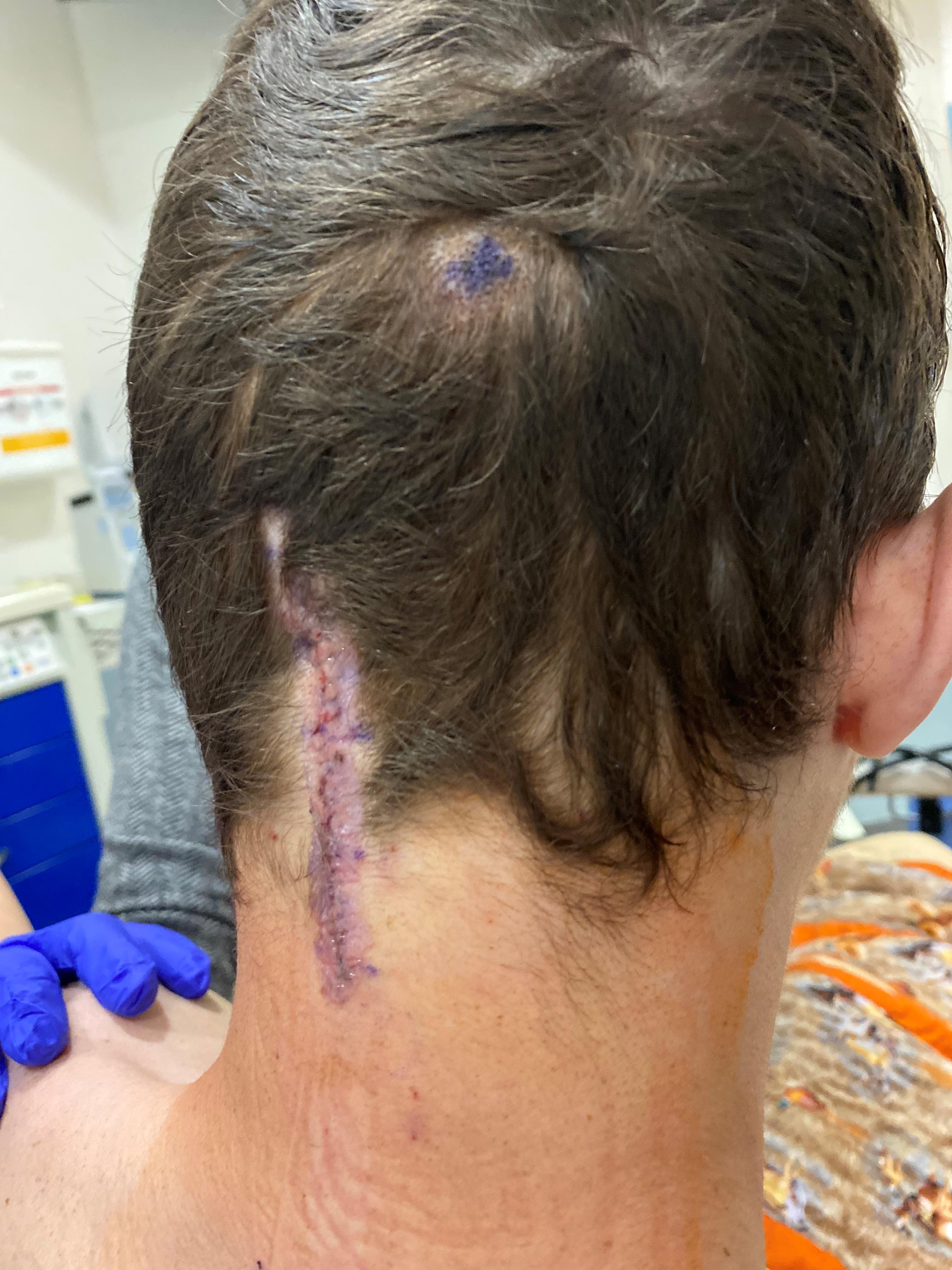
"It was quite a lengthy surgery, but once it was all done, we felt incredibly grateful and relieved," shared Stephany. "The next day brought the reassuring news that the tumor was non-cancerous – the best-case scenario for this type of diagnosis. Fortunately, Brady didn't need physical therapy post-surgery. We spent four days in the hospital before he was ready to head home. His recovery at home was a bit challenging; for about three to four weeks, he had to take it easy and refrain from strenuous activities. His recovery hinged on rest and avoiding overexertion, but he managed to walk around and take care of himself. Since the surgery, he hasn't experienced any deficits."
Since his surgery, Brady has follow-up visits with Dr. Volk every three months, and he is doing exceptionally well. Post-operative imaging has shown stability in his condition. Brady no longer experiences the headaches that troubled him before. The Cure family expresses their deep gratitude to Dr. Volk, his team, and the dedicated nurses who provided exceptional care during Brady’s recovery from brain surgery.
“The entire team was wonderful,” said Stephany. “Dr. Volk has a remarkable way of communicating with his patients, making everyone feel at ease. His bedside manner is excellent. While this was undoubtedly a frightening experience, our faith kept us strong. The best advice I can offer other families is to conduct thorough research, ask numerous questions, and do not hesitate to seek additional opinions. It’s also important to surround yourself with a team that supports you.”
For more information about the neurosurgery team at Children’s Hospital New Orleans, visit our website at Neurosurgery | Children's Hospital New Orleans (chnola.org).
